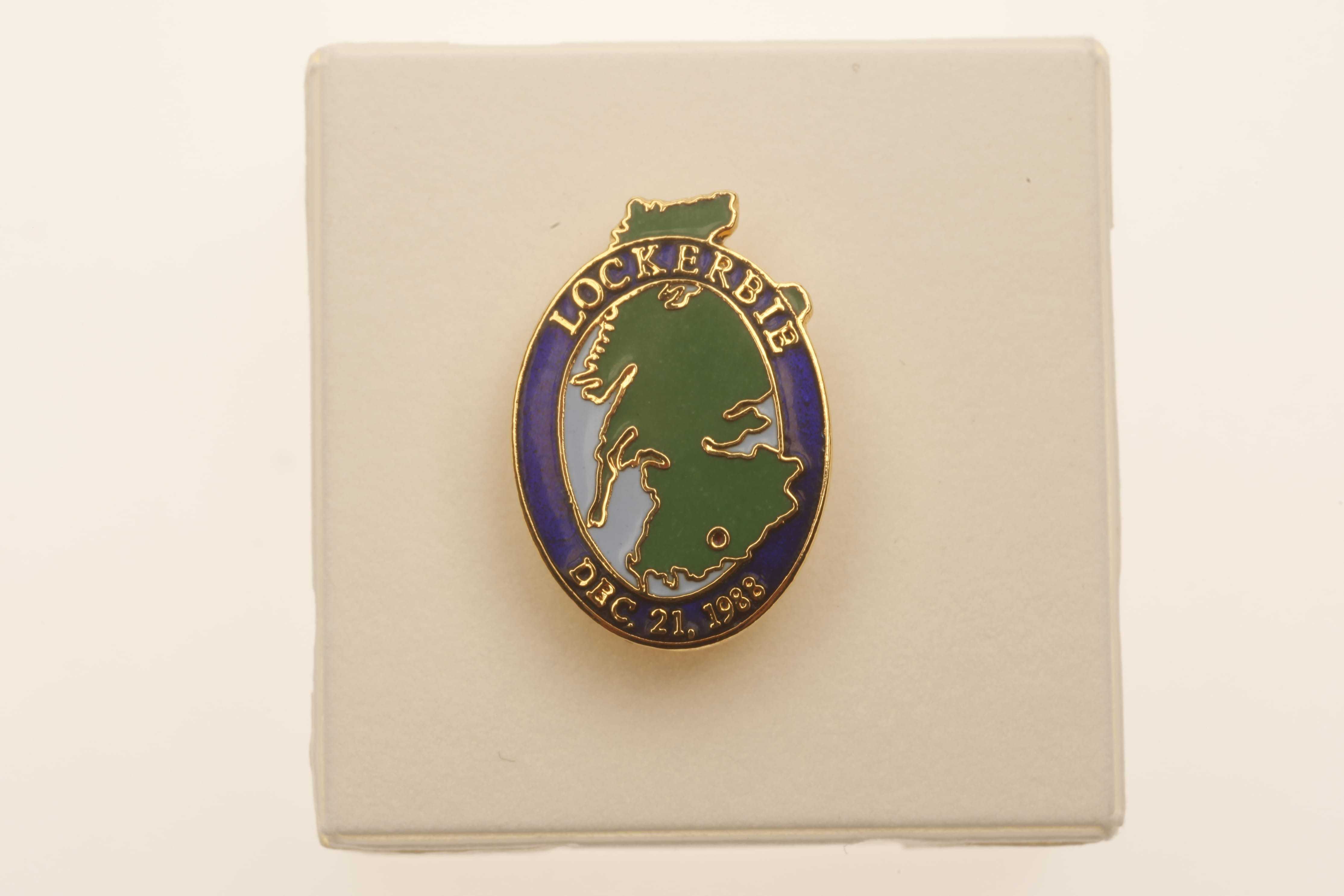Artifact Details

CIA officers provided expert testimony that led to the conviction of the terrorists responsible for the bombing of Pan Am Flight 103.
This pin was designed by the widow of one of the victims of Pan Am 103. It is given to the victim’s family members and supporters by Victims of Pan Am Flight 103, Inc. This group is made up of family members and friends of those whose lives ended when a terrorist bomb exploded on Pan Am Flight 103 over Lockerbie, Scotland, on 21 December 1988.
The pin, mounted on a little card with a beautiful inscription, was first handed out at the dedication of the Memorial Room on the grounds of Tundergarth Church. Tundergarth is four miles outside the town of Lockerbie and is where the nose cone came to rest. The Memorial Room has one book with the name of each victim inscribed and another telling the story of who they were and what they had achieved.
Pan Am Flight 103 exploded over the town of Lockerbie, Scotland, killing all 259 people on board as well as 11 on the ground. The flight was en route from Frankfurt, Germany, to New York via London’s Heathrow Airport. Twenty-seven minutes after leaving London, at 7:02 pm, the plane exploded. Fragments fell on the city of Lockerbie, including an entire wing and engines. Investigators interviewed over 15,000 people, examined 180,000 pieces of evidence, and researched in more than 40 countries.
After a three-year joint investigation by Dumfries and Galloway Constabulary and the US Federal Bureau of Investigation, 15,000 witness statements were taken. The Grand Jury returned the indictment on 13 November 1991. It was unsealed on 14 November 1991, when the Lord Advocate of Scotland announced that the Procurator Fiscal for Dumfries had issued a Petition Warrant for Abdelbaset al-Megrahi, the former head of security for Libyan Arab Airlines (LAA), and Lamin Khalifah Fhimah, the former LAA station manager in Luqa Airport, Malta. United Nations sanctions against Libya and protracted negotiations with the Libyan leader Colonel Muammar al-Gaddafi secured the handover of the accused on 5 April 1999 to Scottish police at Camp Zeist, Netherlands, having been chosen as a neutral venue for their trial.
Following a 40-week trial, a verdict of guilty for murder was returned 31 January 2001 against Abdel Baset Ali Mohamed al-Megrahi. Al-Amin Khalifa Fhimah was found not guilty. The three-judge panel found beyond a reasonable doubt that al-Megrahi placed a bomb in the airplane and that bomb’s detonation caused the deaths of all aboard the plane. The panel found that the prosecution failed to prove the case against Fhimah beyond a reasonable doubt.
Despite arduous American opposition, on 20 August 2009 the Scottish government ordered al-Megrahi’s release on compassionate grounds. He returned home after serving 8 years of his 27-year minimum sentence for murdering 270 people. The Scottish government found that al-Megrahi qualified for compassionate release after medical evidence showed he would die within months of prostate cancer. Almost three years later he died a free man in Libya on 20 May 2012.
Artifact Specs
1.5 cm x 2 cm
(L x W)
